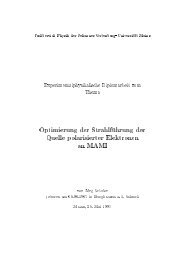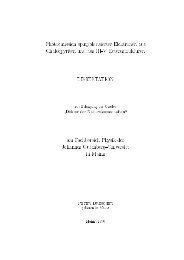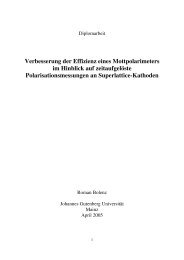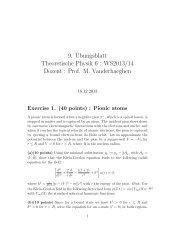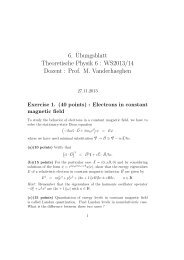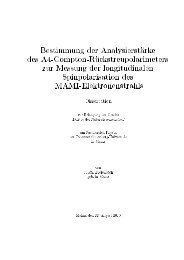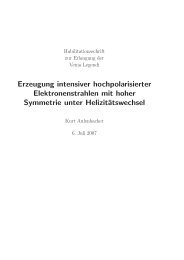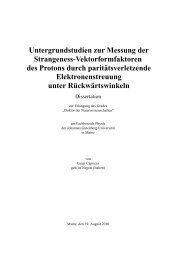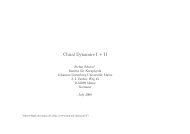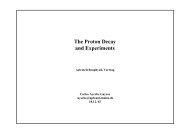EFFECTIVE FIELD THEORIES FOR VECTOR PARTICLES AND ...
EFFECTIVE FIELD THEORIES FOR VECTOR PARTICLES AND ...
EFFECTIVE FIELD THEORIES FOR VECTOR PARTICLES AND ...
You also want an ePaper? Increase the reach of your titles
YUMPU automatically turns print PDFs into web optimized ePapers that Google loves.
22 power counting and regularization<br />
and thus the splitting depends on the used renormalization scheme. In<br />
conclusion, using an appropriate renormalization scheme enables us to<br />
restore a consistent power counting including heavy degrees of freedom.<br />
The extended power counting rules, which allow for assigning a chiral<br />
order to each diagram, read as follows. First, the list of small quantities,<br />
collectively denoted as q, needs to be extended by the expression K 2 −<br />
MR 2 = O(q1 ) if K is a large momentum since the resonance is regarded<br />
as nearly on-shell, K 2 ≈ MR 2 . Next, it is necessary to investigate every<br />
possible flux of the external momenta through each diagram. For each<br />
given flux the order of vertices and propagators are determined and<br />
summed up as detailed below. Finally, the lowest order resulting from<br />
the various flux assignments is defined to be the chiral order of the<br />
diagram. The order of the vertices can be read off the corresponding<br />
Feynman rules taking into account the previously assigned flux of large<br />
external momentum. Additionally, one considers that the pion mass<br />
counts as O(q 1 ), that the vector meson masses count as O(q 0 ), and<br />
that each loop integration counts as O(q 4 ), as usual. The order of the<br />
propagators for small and large momenta can be read off the following<br />
table:<br />
Momentum π ρ or ω<br />
Small O(q −2 ) O(q 0 )<br />
Large O(q 0 ) O(q −1 )<br />
Table 3.1<br />
This can be motivated by the following approximative considerations of<br />
the typical pole structure of a propagator:<br />
1<br />
k 2 − M ≈ 1<br />
2 M = 2 O(q−2 ) ,<br />
1<br />
K 2 − M ≈ 1<br />
2 K = 2 O(q0 ) ,<br />
1<br />
≈ 1<br />
(3.2)<br />
= O(q 0 ) ,<br />
k 2 − Mρ<br />
2 Mρ<br />
2<br />
1<br />
= O(q −1 ) (see text above) ,<br />
K 2 − Mρ<br />
2<br />
where k represents a small momentum and K a momentum with at least<br />
one large component, say the zeroth, corresponding to the large mass of<br />
a rho meson.



